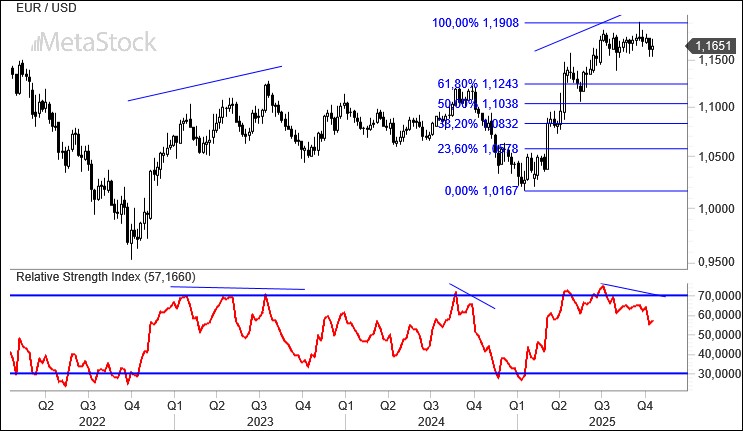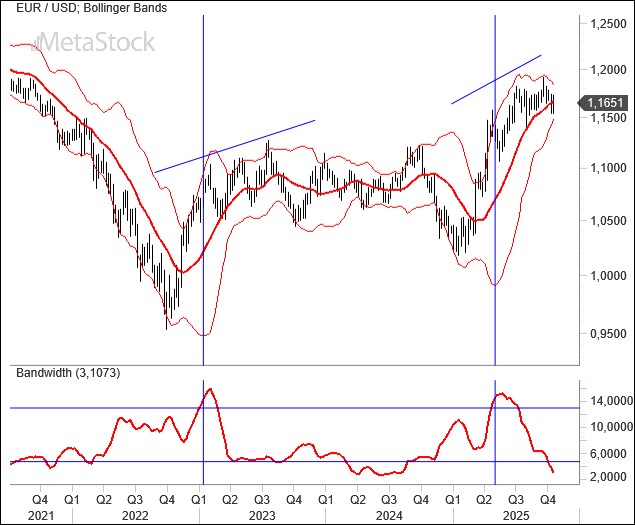- Donald Trump has managed, for now, to halt fighting in Gaza and is reportedly turning his attention to Ukraine in a new round of diplomatic efforts. At home, the U.S. government remains in shutdown mode, while the Federal Reserve signals it is ready to cut interest rates at least two more times before the end of the year. Meanwhile, the President has threatened sweeping 100% tariffs on Chinese imports starting in November, even as diplomatic channels remain open.
- In Europe, attention stays fixed on France, where political tensions continue to rise. President Emmanuel Macron faces mounting pressure after the failure of Prime Minister Lecornu’s first government. Lecornu has now been reappointed to form a compromise administration capable of restoring some stability.
- Against this complex backdrop, EUR/USD remains trapped in a tight range, with neither bulls nor bears managing to break through critical resistance or support levels.
Markets Bet on Fed Easing
As Trump celebrates a fragile peace deal between Israel and Hamas, expected to bring temporary calm to Gaza, he is also seeking to broker an eventual truce between Russia and Ukraine. Meanwhile, markets appear oddly comfortable with the U.S. government shutdown that has been in place since October 1, which has halted much of the federal government’s routine activity.
In a counterintuitive twist, analysts see the paralysis as good news. A slowdown in public operations means weaker growth and softer job creation, conditions that would pressure the Fed to accelerate rate cuts.
Minutes from the Federal Open Market Committee’s September 16-17 meeting revealed that most Fed officials favor additional monetary easing before the end of 2025, with at least two more cuts likely. However, the macroeconomic data needed to justify that move have yet to materialize, leaving the dollar vulnerable to further downside.
At the same time, Trump’s renewed confrontation with China has reignited trade war fears. He accuses Beijing of “hostile actions” against global commerce and has pledged to impose 100% tariffs on all Chinese goods entering the U.S., while tightening restrictions on U.S. software exports. China, still mired in deflationary pressure through September, has warned that it will respond in kind unless Washington backs down. A meeting between Trump and China’s President in South Korea later this month could prove pivotal in defusing tensions.
In Europe, France’s ongoing political turbulence continues to weigh on the euro. Macron is pushing for a temporary government led again by Lecornu, who has already delayed the controversial pension reform until after 2027.
EUR/USD Technical Analysis: Stability Amid Conflicting Forces
The EUR/USD pair remains directionless, just as anticipated in previous analyses. Seasonal weakness, cautious sentiment, and political instability in France are holding back the euro, while the Fed’s dovish stance and the U.S. shutdown prevent the dollar from gaining momentum. The result is near-total equilibrium.
From a technical perspective, divergences between price action and weekly oscillators had signaled a correction, which appears to have found its first major support area around 1.1500–1.1570. That zone has so far held firm. Should it break, the pair could slide toward 1.1250, which analysts see as the dollar’s most optimistic short-term target.

EUR/USD is caught between decisive technical levels, lacking direction as traders await the next catalyst. Volatility indicators confirm this indecision, with the upper and lower Bollinger Bands tightening sharply – a pattern that has historically preceded significant moves in the months that follow.
If the Fed proceeds with further rate cuts, the most probable outcome would be a breakout to the upside. However, confirmation will likely come only after the U.S. shutdown ends and fresh macro data are released.

Volatility has dropped to its lowest point in months, reflecting the market’s standstill. Until new U.S. data or clearer signals from the Fed emerge, traders appear reluctant to take strong positions, leaving EUR/USD suspended between competing forces of policy, politics, and sentiment.

Leave a Reply
You must be logged in to post a comment.